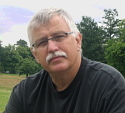John Harer and Philip Benfey
Working with the lab of Philip Benfey of the Duke Biology Department, John Harer's research group is studying how to improve the ability of staple crops to grow in African soils by identifying genes involved in drought tolerance with a special emphasis on root architecture. Mathematically, they are developing geometric descriptors of this architecture, based on persistent local homology. High-throughput image collection and analysis precedes the application of our descriptors, which are then used for statistical analysis. This work also includes a collaboration with the Weitz lab at Georgia Tech.
John Harer and Philip Benfey
Somitogenesis is the process by which vertebrae are developed. Understanding how this works is an important problem in biology and medicine. A variety of models for somitogenesis have been proposed, the "clock and wave" model of Cooke and Zeeman being the foremost. Working with Prof. Philip Benfey in the Duke Biology Department and Prof. Olivier Pouquie at the IGBMC in Strasbourg, we study models for somitogenesis and the analogous problem in plant root systems.
Roots grow from their tips, and as they develop they lay down the possibilty of developing a lateral root. The decision is made later whether this root grows out, probably based on nutrient availability and other nutritional factors. Our project concerns whether the spacing of lateral root potential sites is controlled as carefully as are the number of vertebrae in somitogenesis, and whether the mechanisms share common operational features. The principle philosophy behind this project is "convergent biology", which proposes that nature discovers common solutions to problems from different starting points. Wave models, gene networks and dynamical systems all come together in this project.
Yeast cell cycle
John Harer
and Steve Hasse
The duplication and division cycle of a cell is a complex event, one that has been studied for a long time. Budding yeast, Saccharomyces cerevisia, is a widely studied model of this process. John Harer works with Prof. Steve Hasse of the Duke Biology Department to understand how networks of gene transcription and cyclin/Cdk complexes coordinate to control cell cycle events. In particular, they are providing mathematical approaches to questions of network structure and dynamics. The mathematical methods they use have been developed in our projects in computational topology and network dynamics.
David Schaeffer and Paul Magwene




